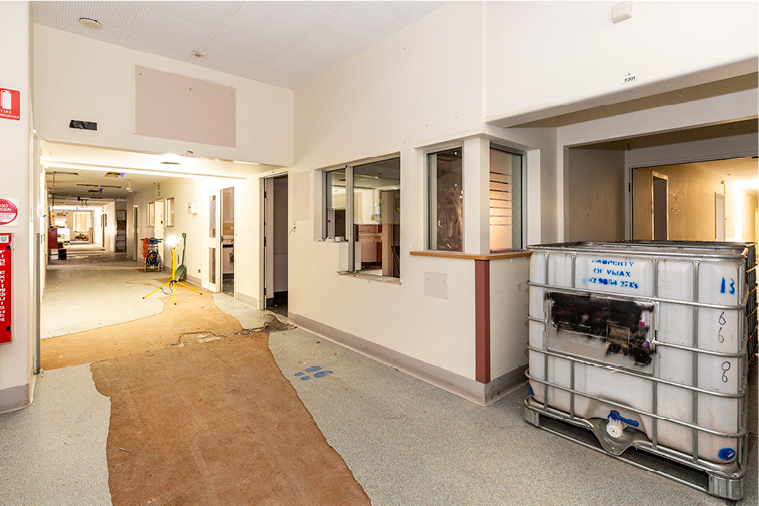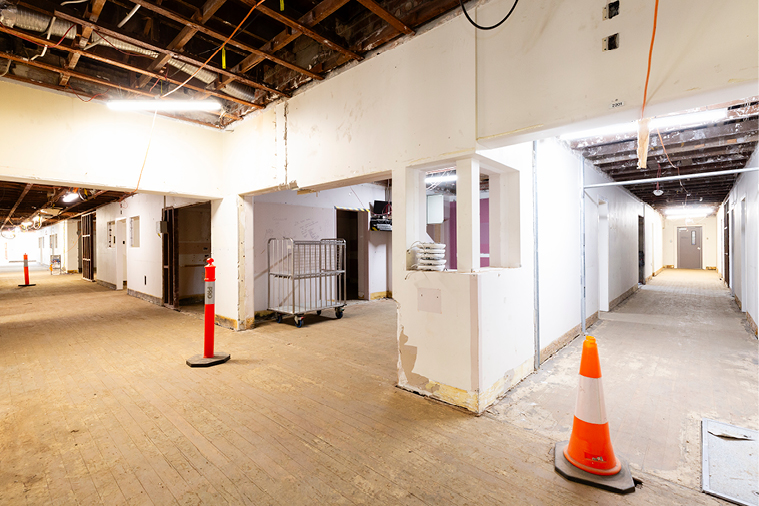Significant challenges
Responding to a population explosion and managing ageing infrastructure were 2 of our biggest challenges in 2023-24.
As the population in our catchment area continues to rapidly grow, we must increase the capacity of existing services and find new ways to meet additional demand for health care.
Ageing critical infrastructure, in need of upgrading, is causing further budgetary pressures.
Investment in primary and mental health and the further leveraging of digital technology and virtual care is paving the way, though the challenge remains significant.
Capacity constraints and population explosion
The population in the EMHS region is rapidly expanding, with South-East (Armadale) being one of the fastest growing catchments in metropolitan Perth.
In the next 11 years, population in the South-East health district is projected to increase by a further 26.4 per cent, placing increased pressure on Armadale Health Service (AHS).
Similarly, the Swan and Hills (Midland) population is expected to increase by 22.5 per cent within the same period, placing extra demand on St John of God Midland Public Hospital (SJGMPH).
In addition, a generally ageing population and increasing prevalence of people often with multiple comorbidities or chronic disease, are compounding our demand challenges.
Since EMHS was first established in 2016, presentations to EMHS Emergency Departments (EDs) have increased by 11.7 per cent (194,733 in 2016-17 to 217,550 in 2023-24). This can, in part, be attributed to the increase in population within the wider EMHS catchment area – which has grown from approximately 708,000 in 2016-17 to now more than 795,500.
Rising to the challenge
To address the challenges posed by rapid population growth, we have been evolving our hospital operating models, expanding our network, and developing a comprehensive plan for the future.
Changes have included new best-practice models of care which redesign the health system away from hospital-based acute care towards integrated, community-based services, harnessing technology where possible.
Examples of this are EMHS Home Hospital and Community Health in a Virtual Environment (Co-HIVE). Click here to read more about these initiatives.
A new EMHS Clinical Services Plan – Towards 2034, to be released in early 2025, is also set to outline innovative approaches to care provision in the community in conjunction with the new EMHS Community and Virtual Care Innovation Directorate.
The Directorate was set up in December 2023 to focus on enhancing existing services such as Health in a Virtual Environment (HIVE), and commissioning new virtual care services, in line with the EMHS Care Beyond Hospital Walls roadmap and population health planning needs.
New bricks and mortar projects to increase capacity are also underway or planned. They include construction of a Surgicentre at Bentley Health Service and master planning for the future of St John of God Midland Health Campus.
Initial work has also begun to progress the development of the Byford Health Hub (click here for more information), and funding has been earmarked to expand SJGMPH by 60 beds and 3 operating rooms in 2026-27.
Infrastructure
Ageing infrastructure across EMHS sites, including Royal Perth Hospital’s (RPH) century-old premises, requires a comprehensive maintenance and works schedule. Non-scheduled reactive repairs and maintenance works increasingly contribute to the diversion of funds and resources away from planned and preventative maintenance activities, as well as disrupting patient care.
EMHS maintains 56 buildings across our network, with the oldest dating back to 1855 (RPH).


Cyber security
EMHS places a high priority on ensuring the safety of our digital information, technology and services, and this year has continued to progress priority actions to ensure appropriate cyber security measures are in place.
In 2023-24, we worked with partners across WA Health to implement a number of cyber security initiatives and increase staff awareness of changes, risks and good practice (click here for more information).
The expanded EMHS cyber security team have worked hard to establish practices to ensure reliable access to systems and information underpinning patient safety, privacy and care.
Workplace aggression and violence
Aggression and violence towards staff remain priority concerns. In 2023-24, the number of incidents compared to the previous reporting period decreased overall, however there were pockets of increase across individual sites, such as RPH.
The safety of our staff is paramount and this year, like every year, EMHS has taken a comprehensive, integrated and continuous improvement approach to reducing the impact of exposure of staff to workplace aggression and violence through robust risk management, featuring governance, prevention, training, response, reporting, investigation and review.

